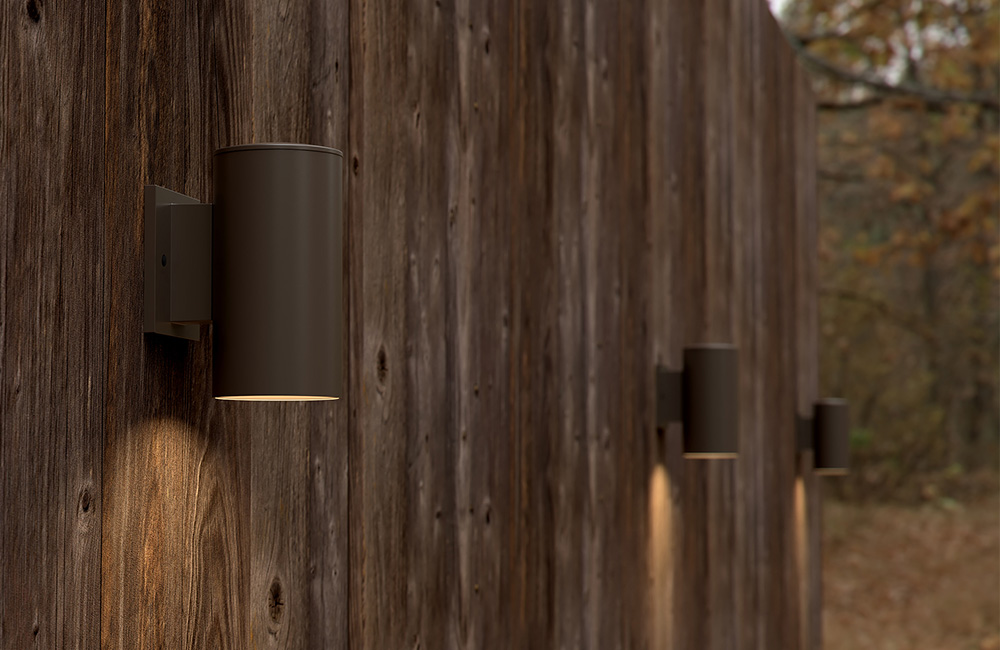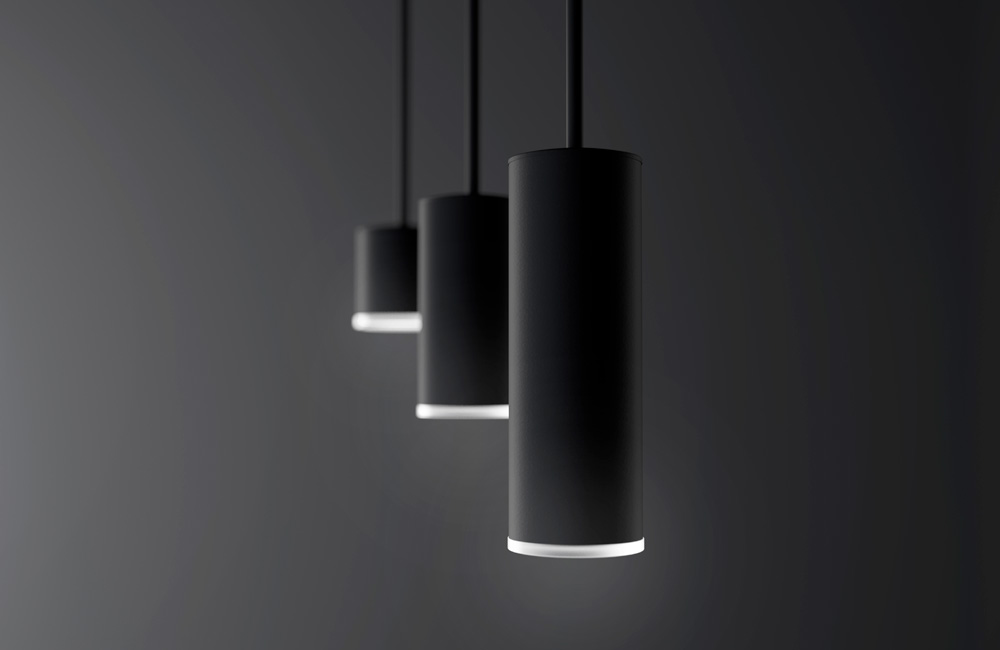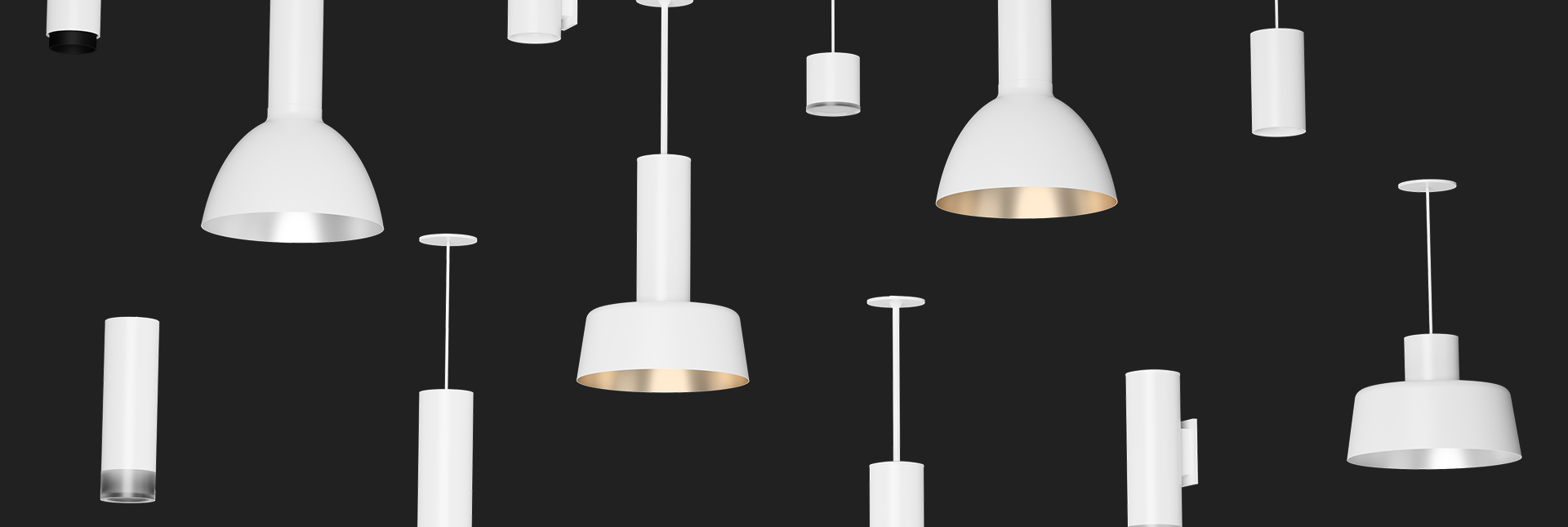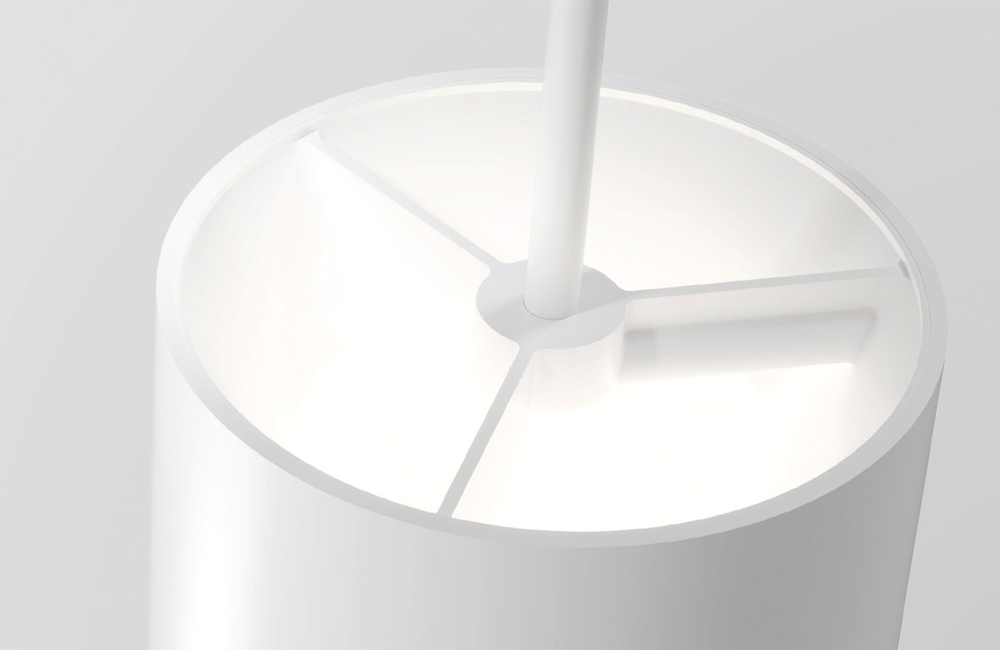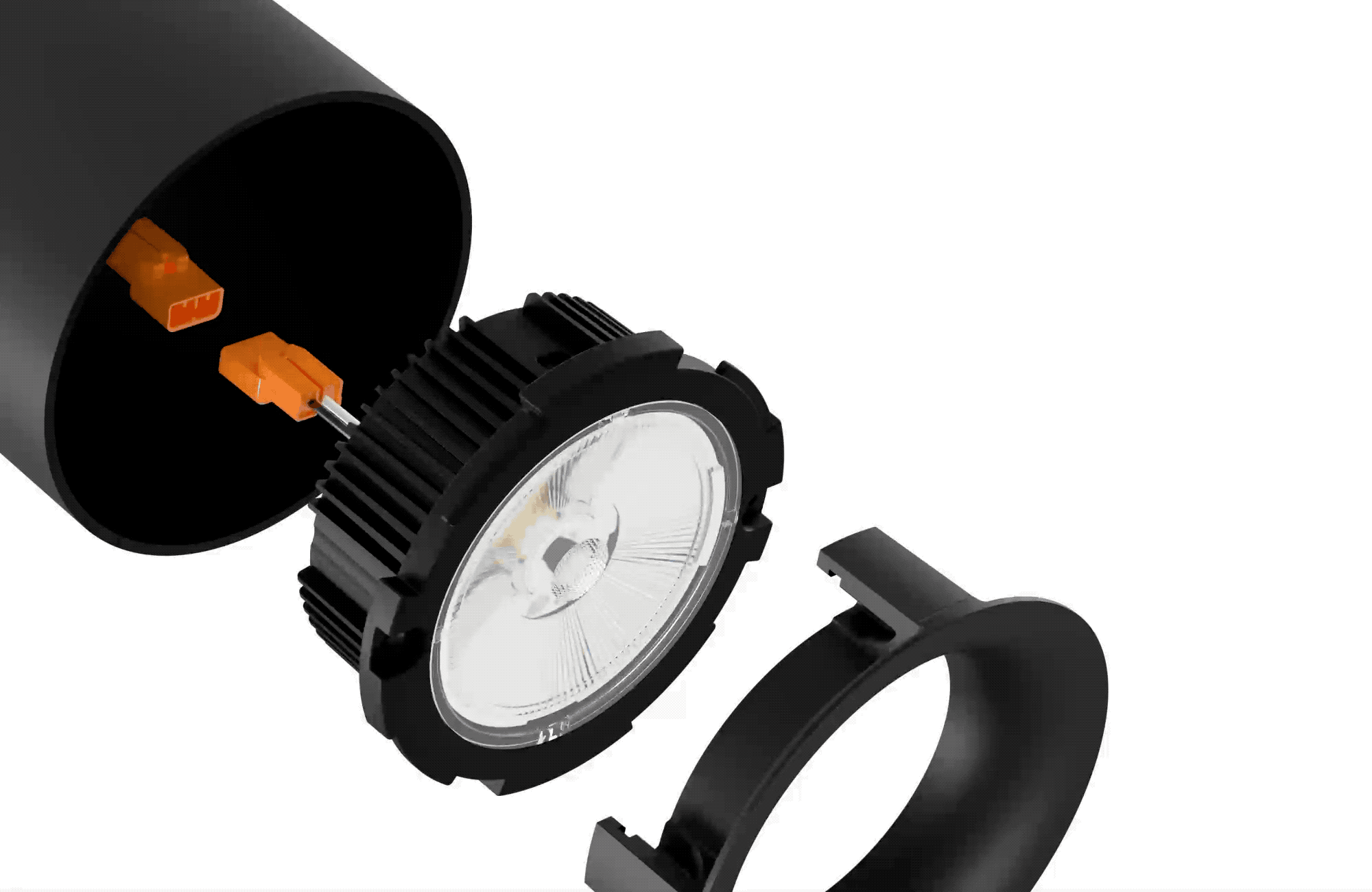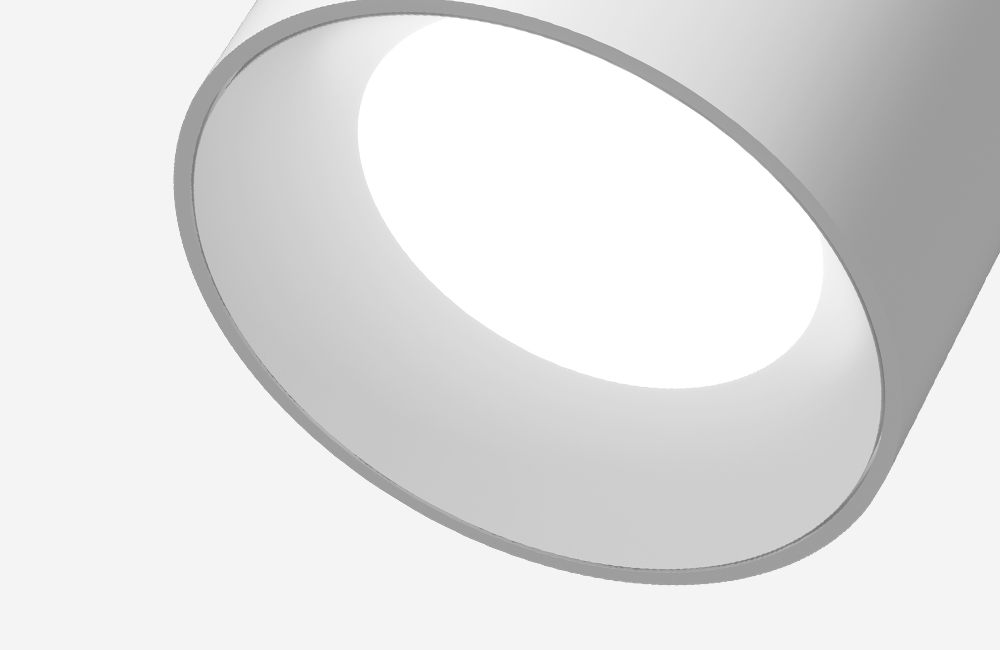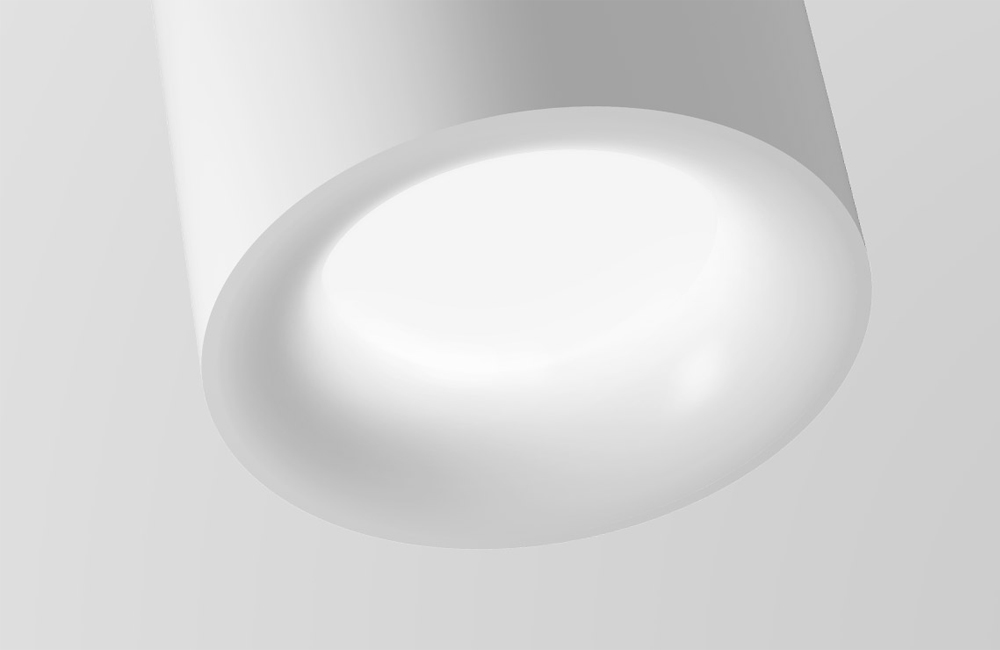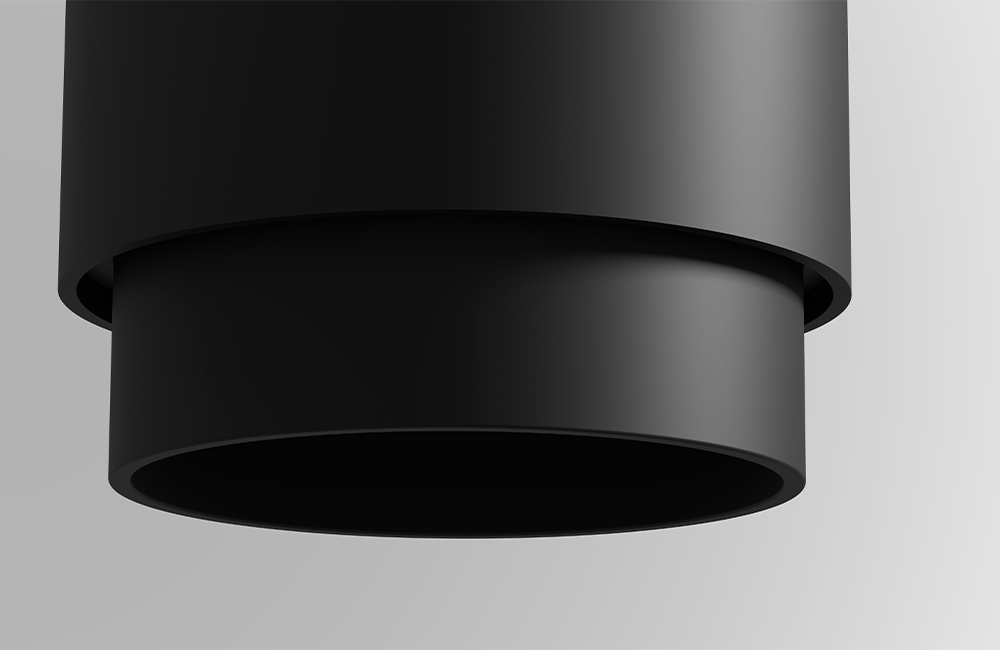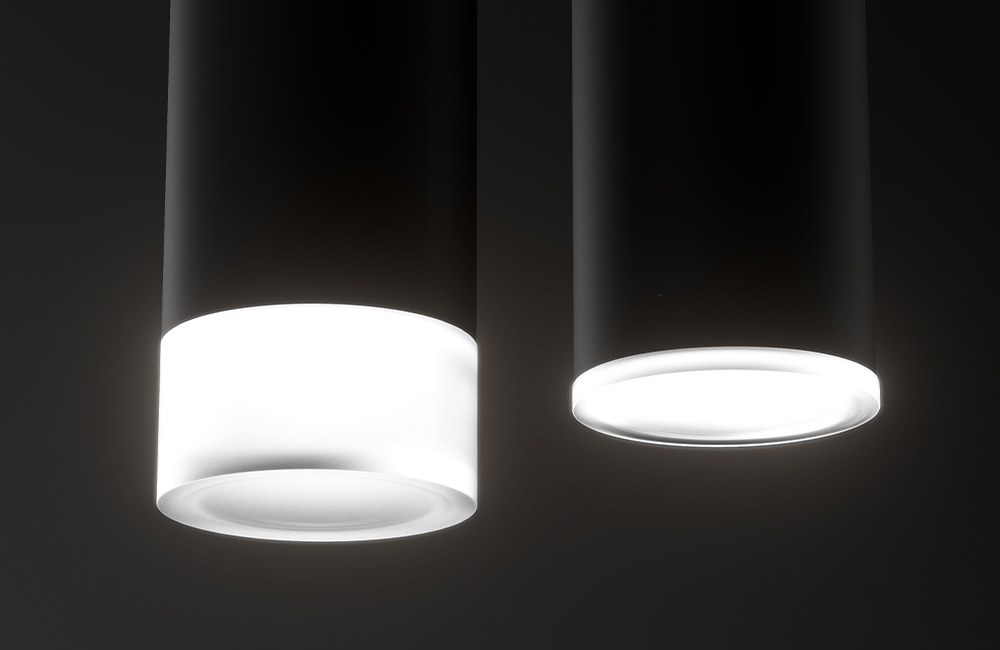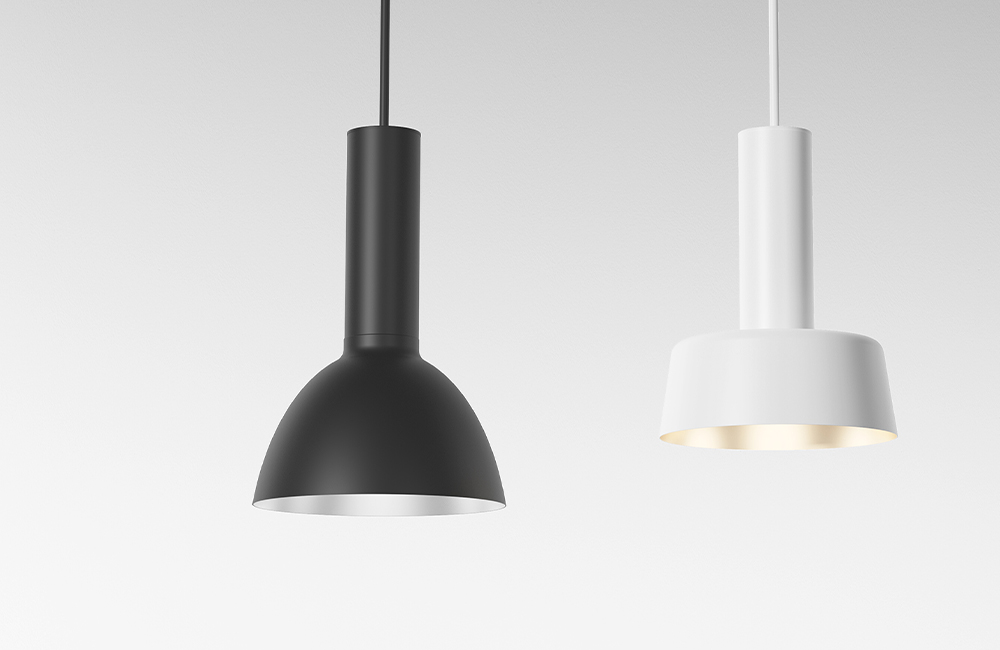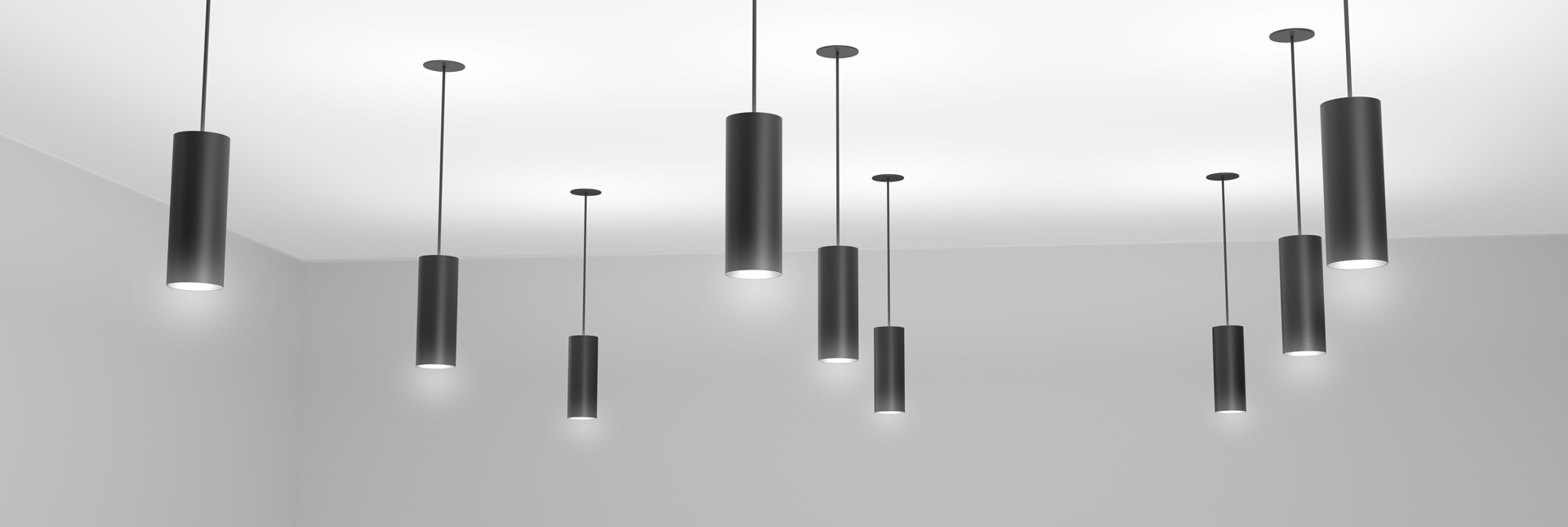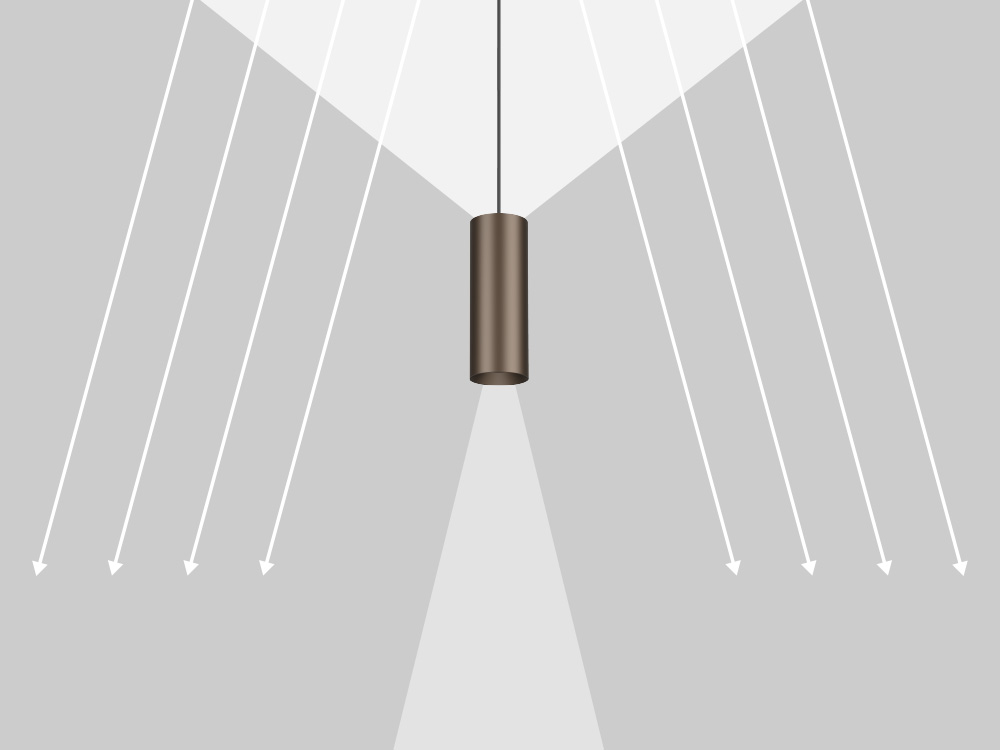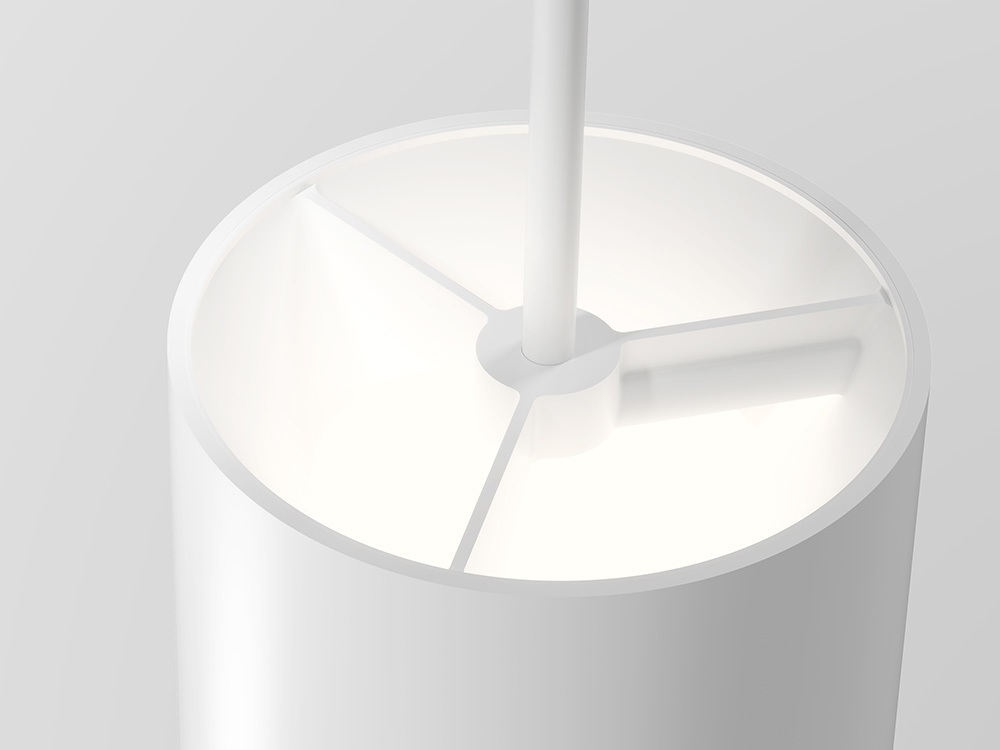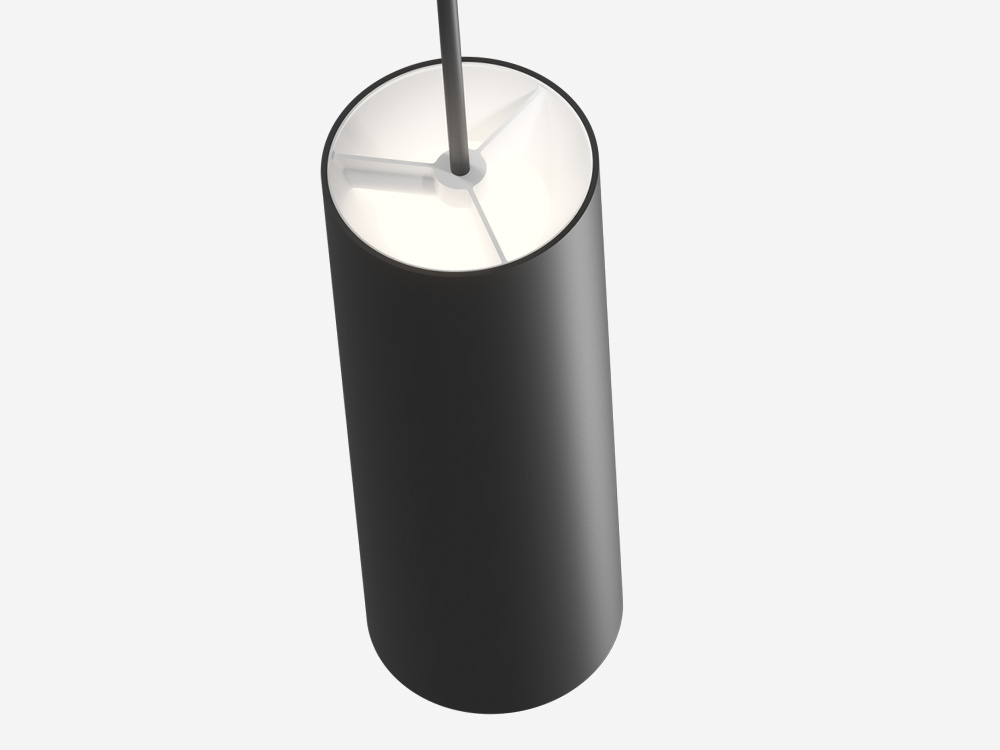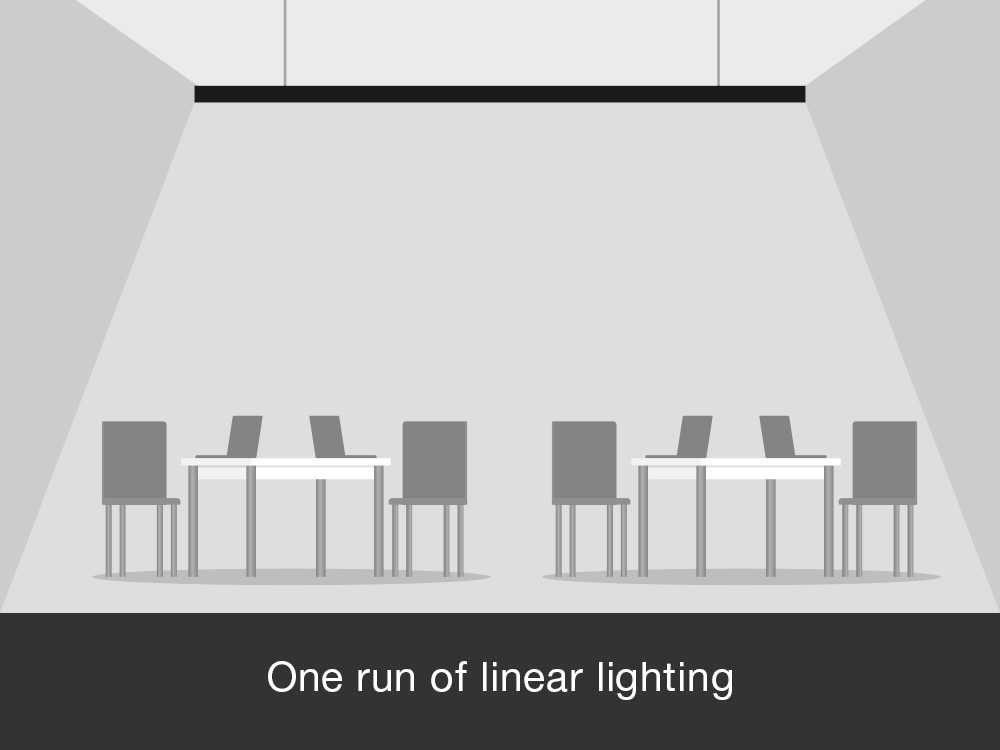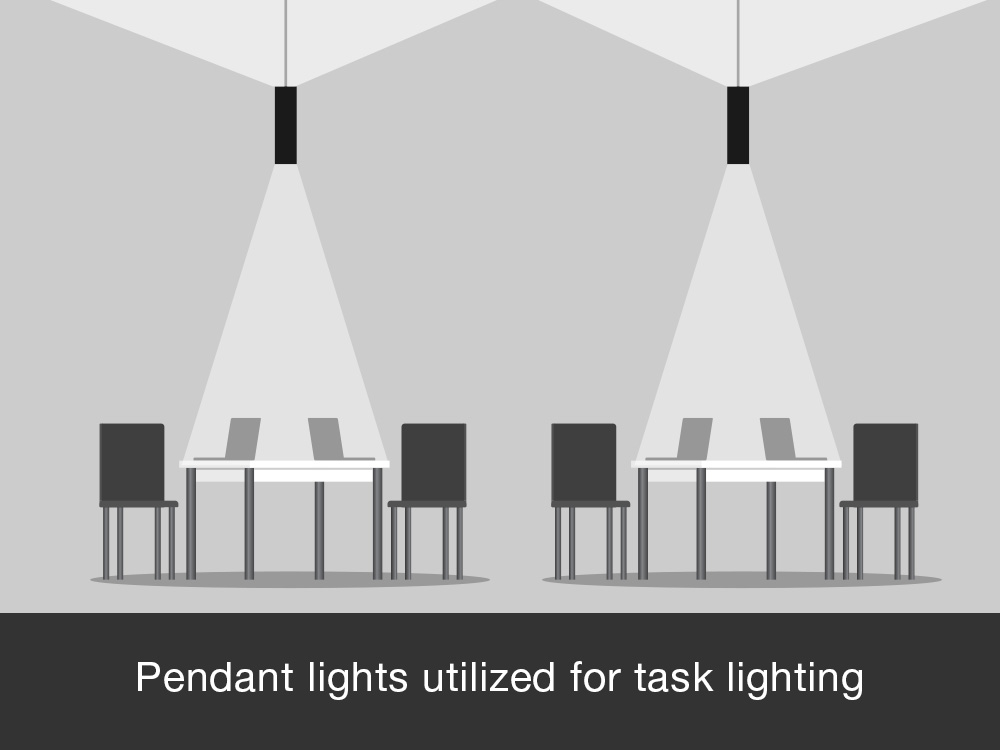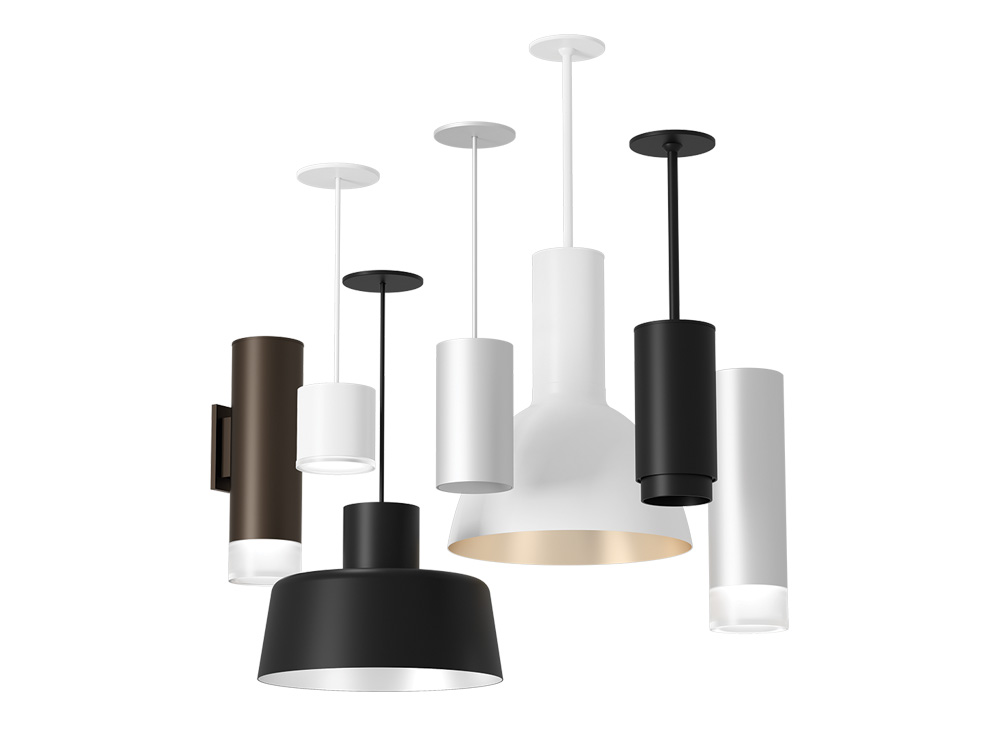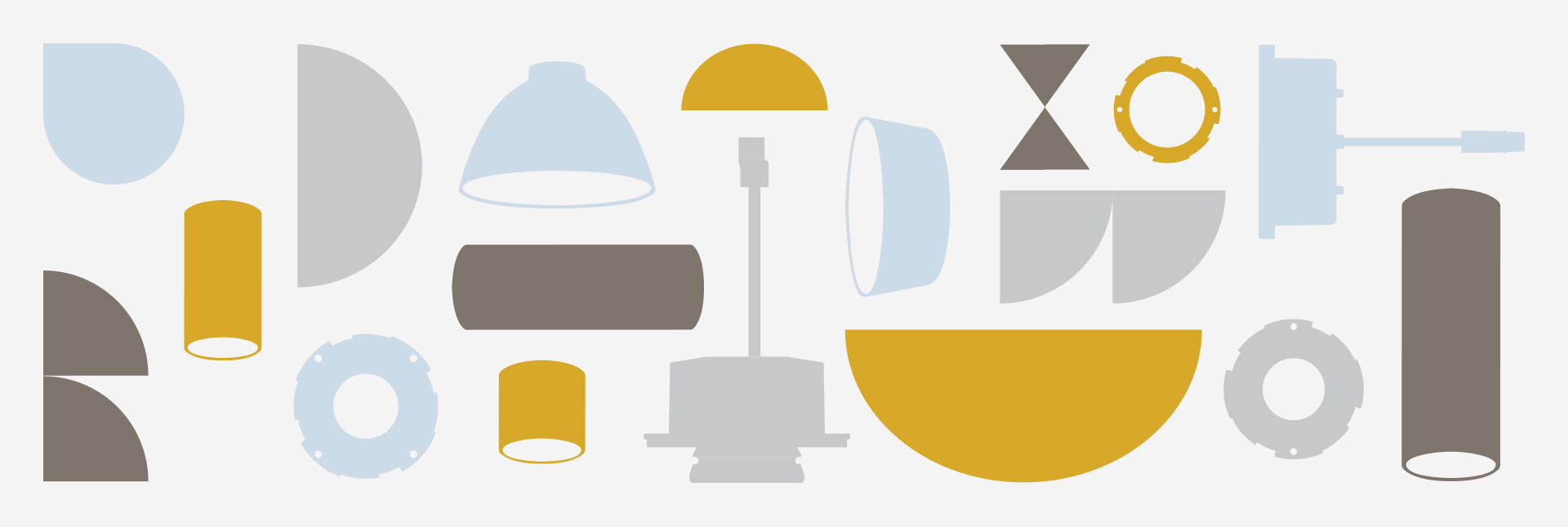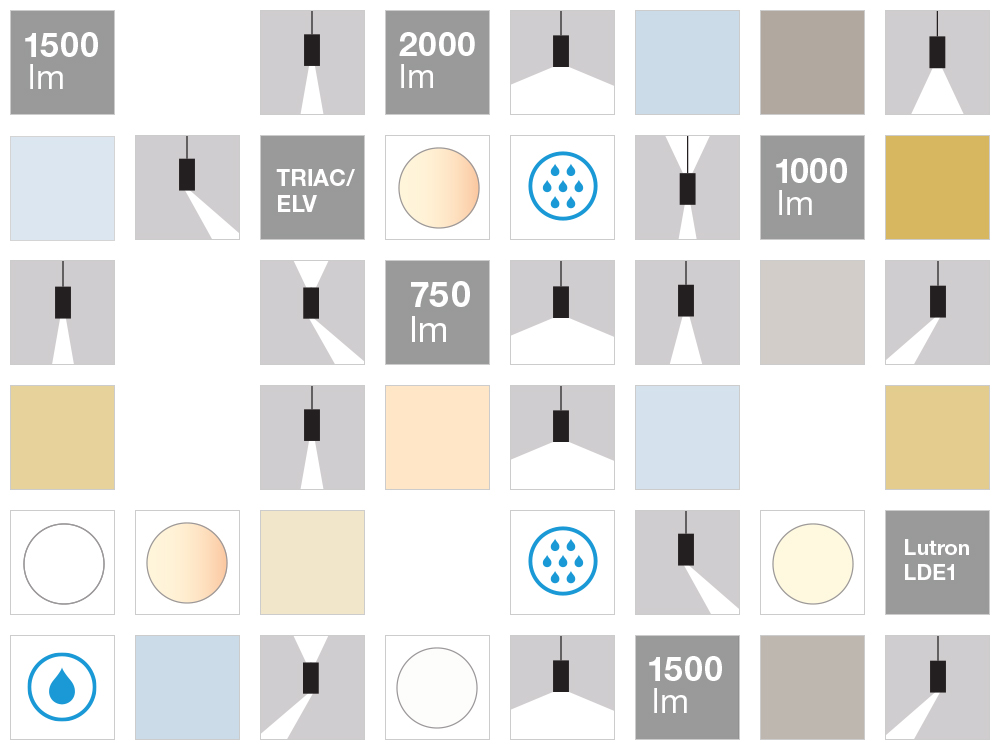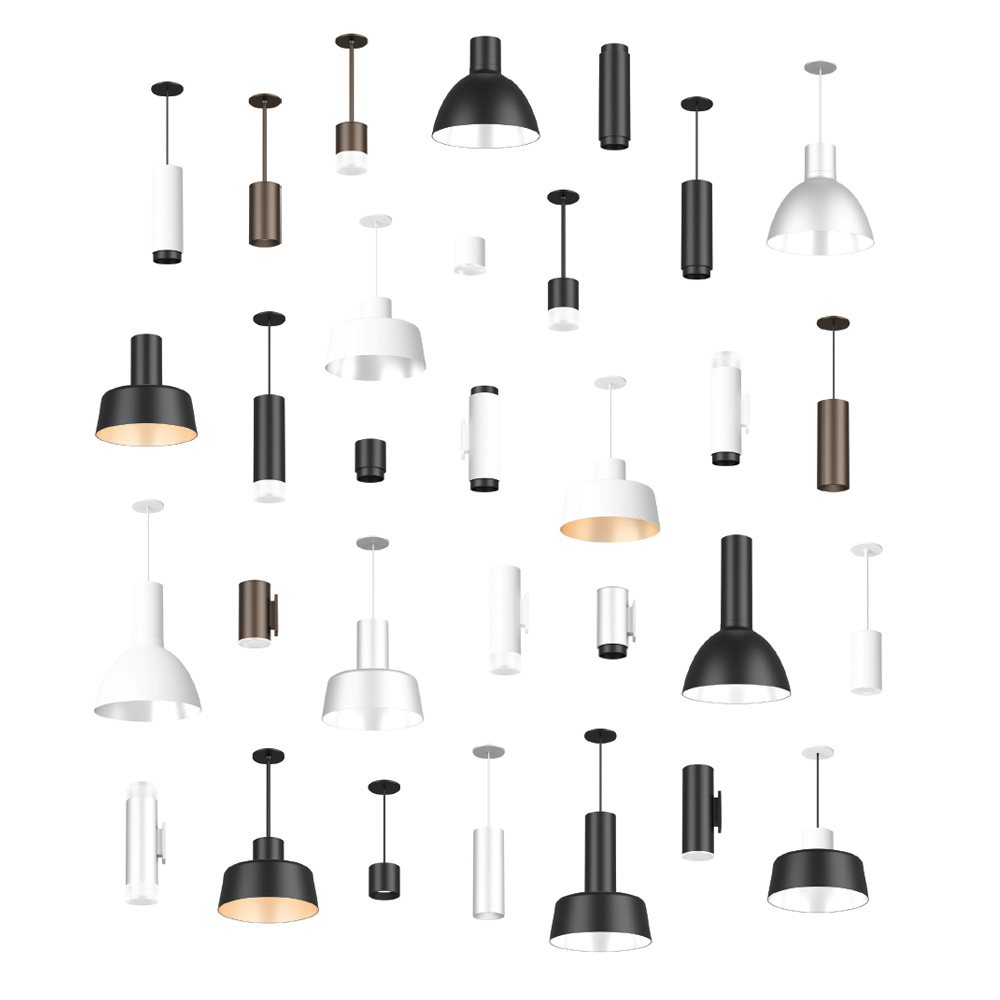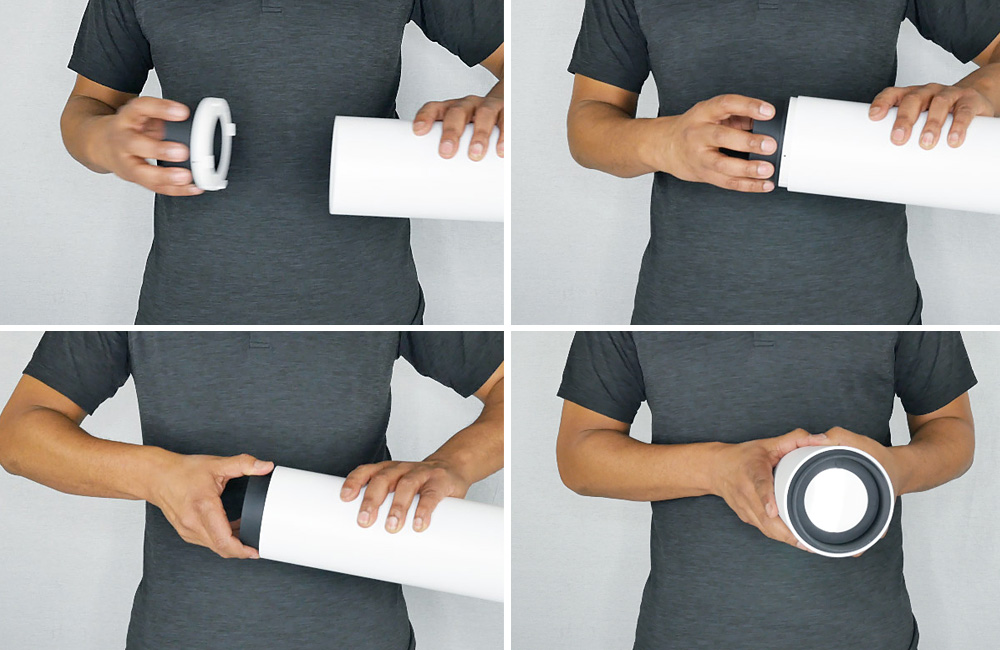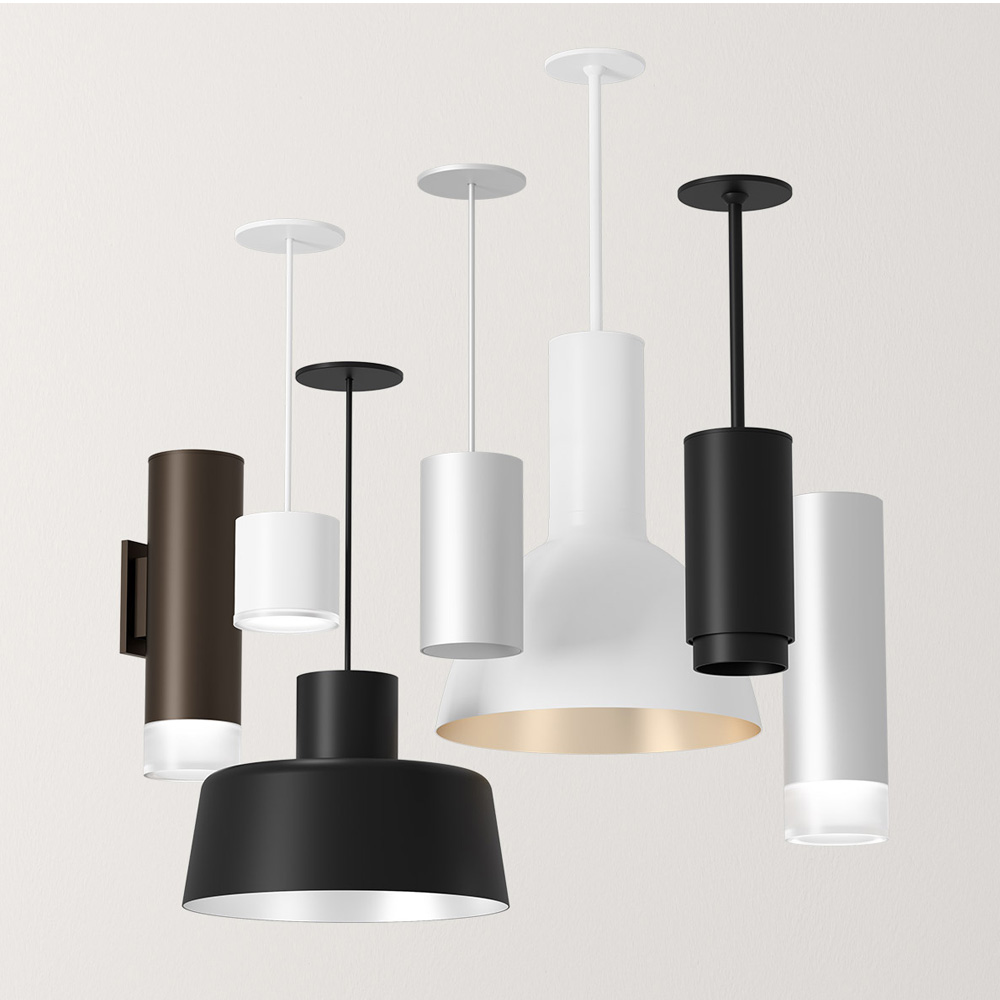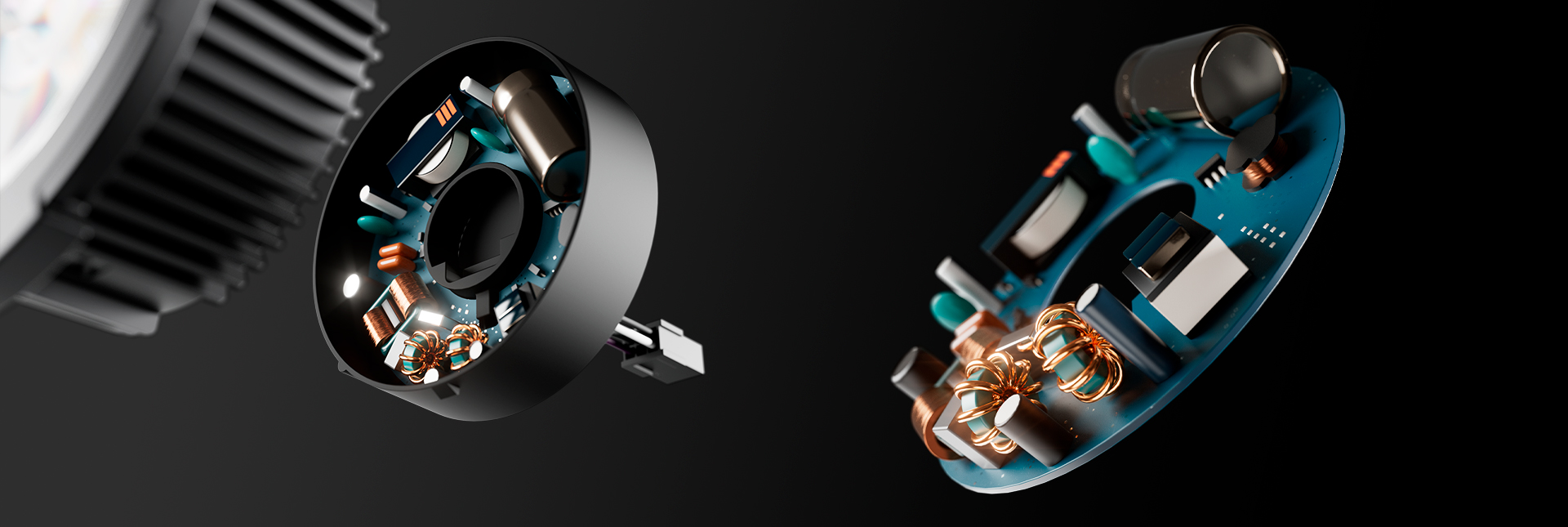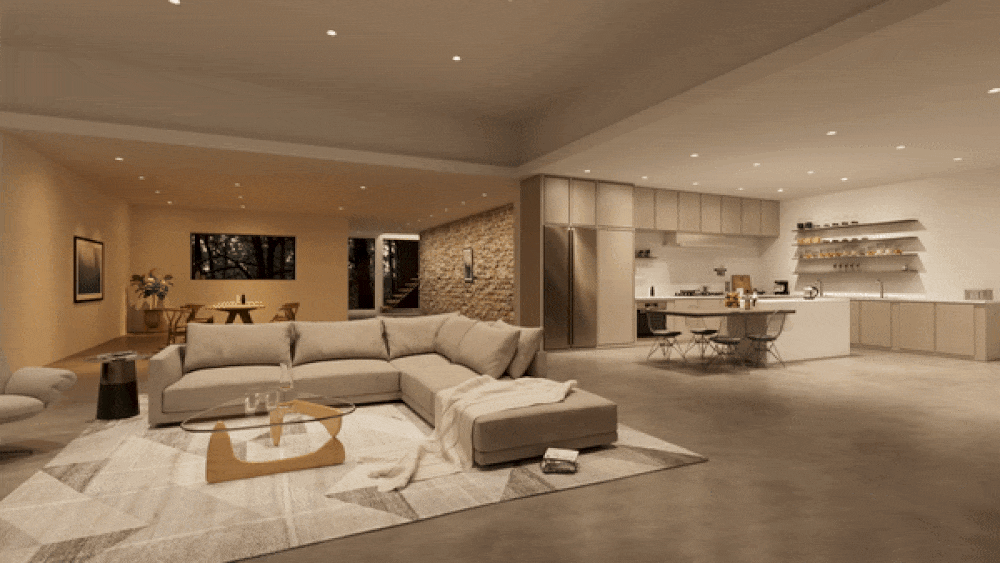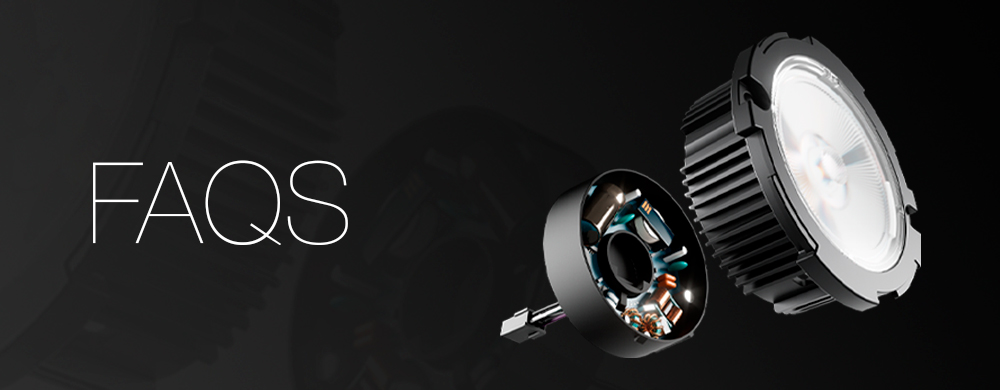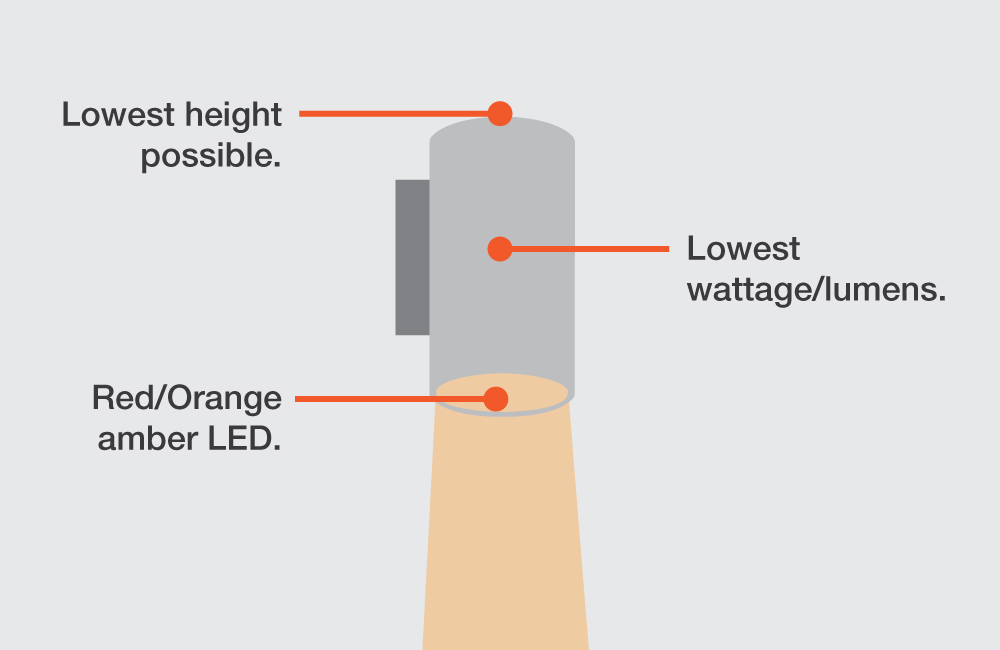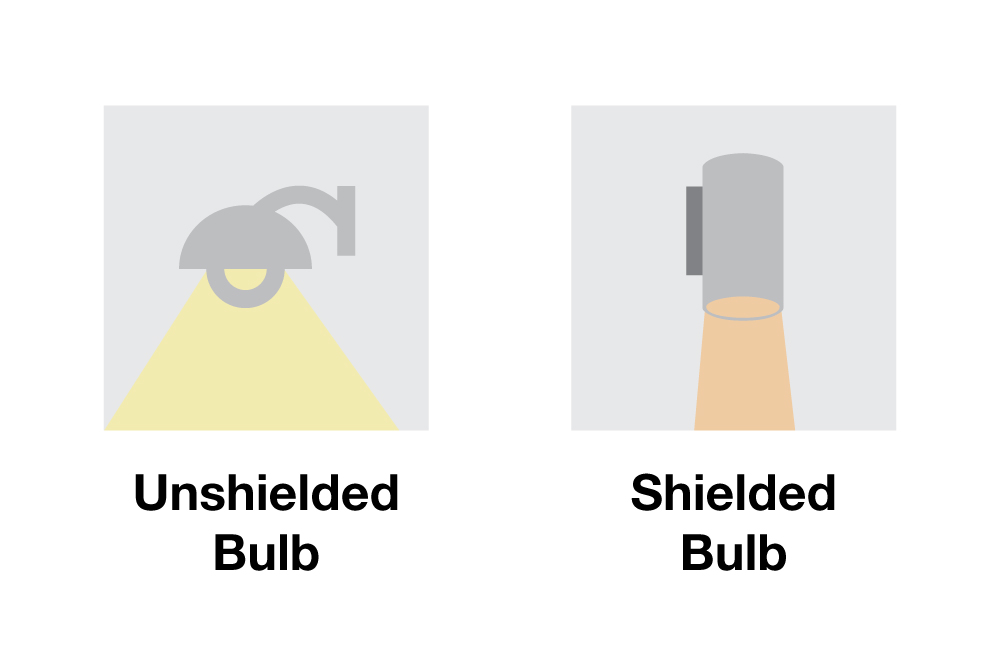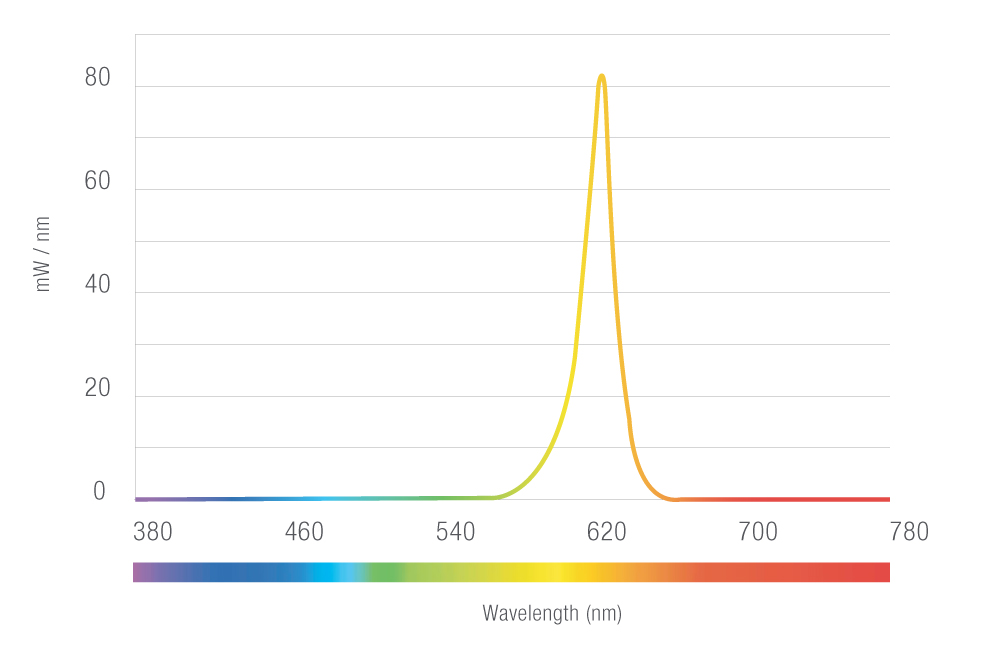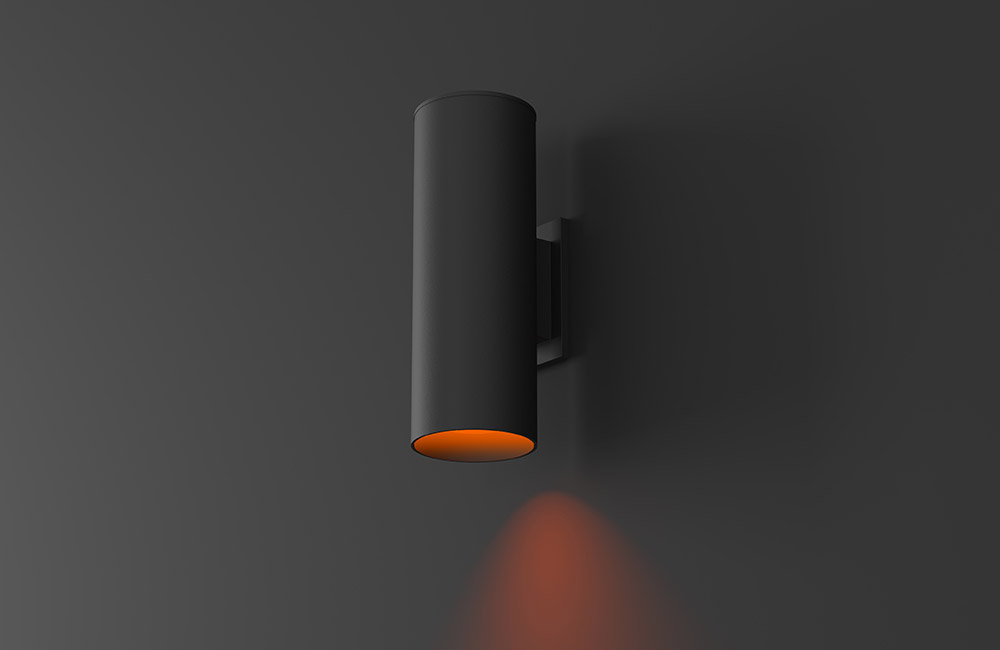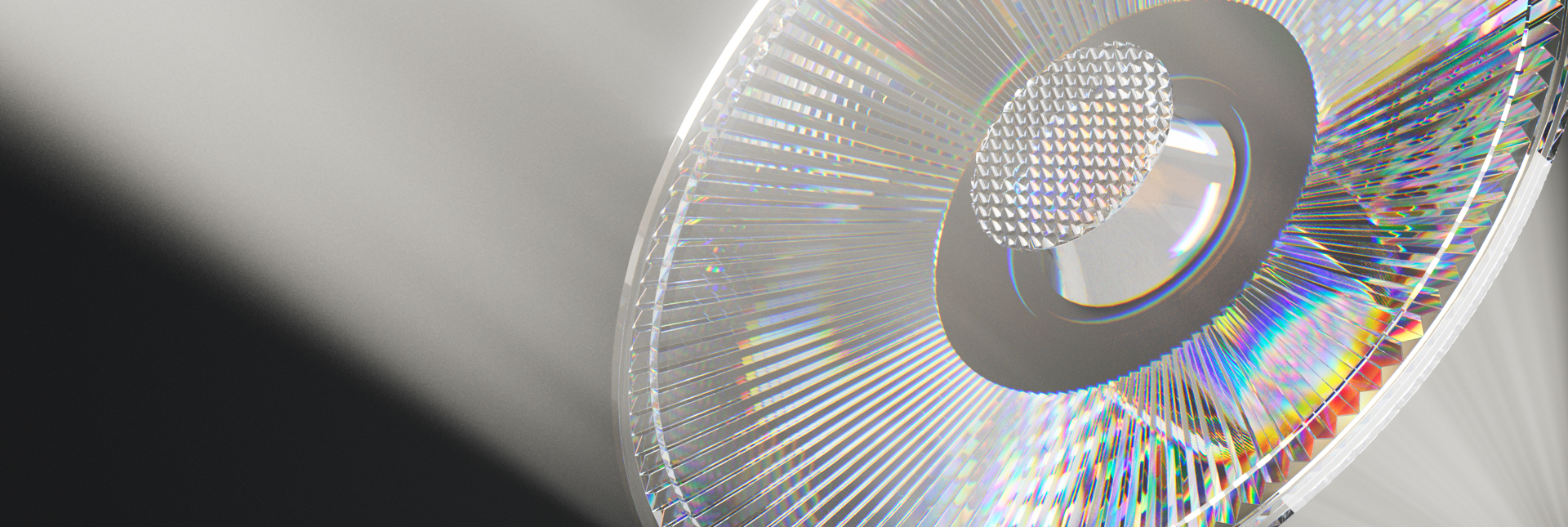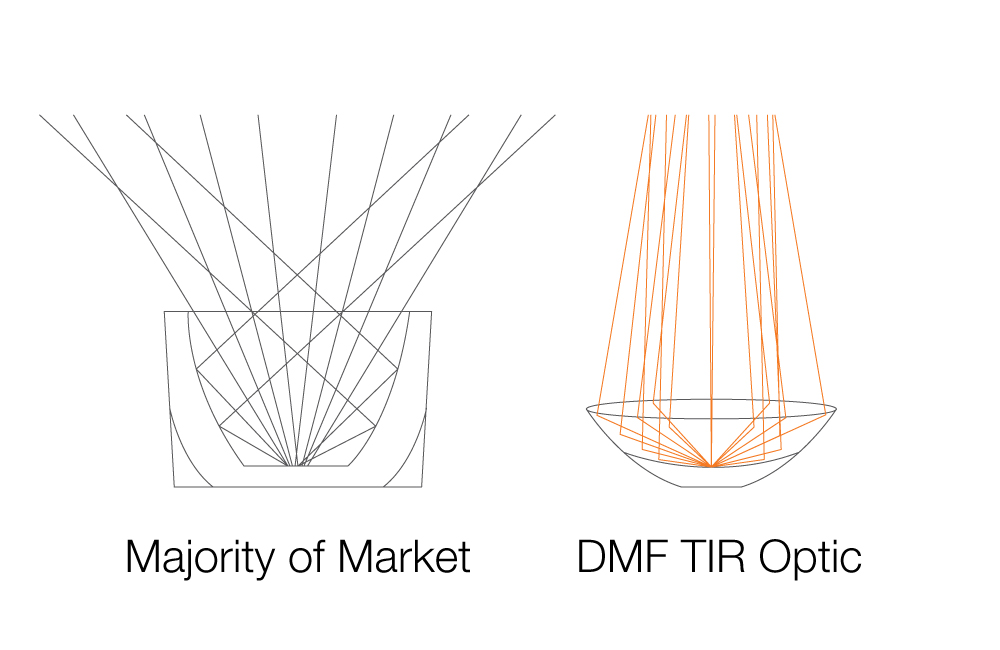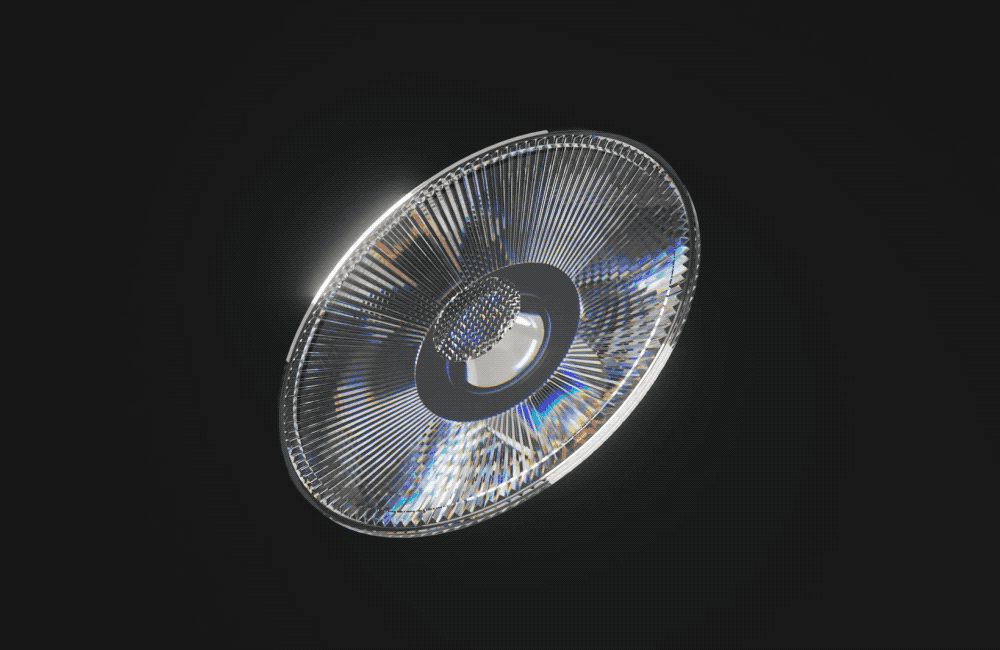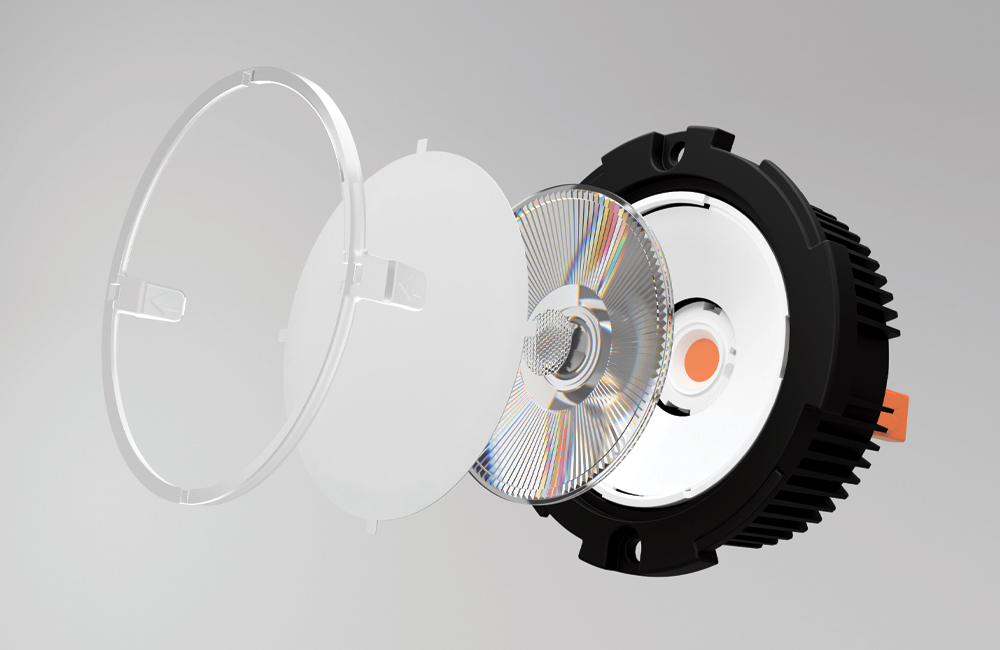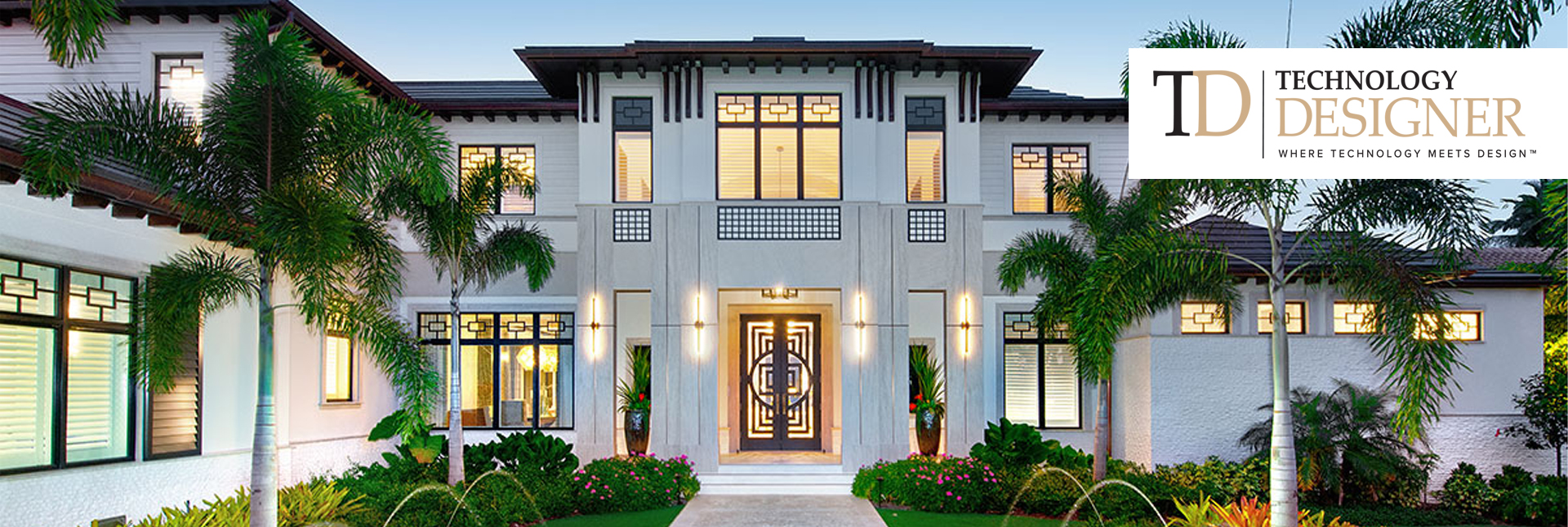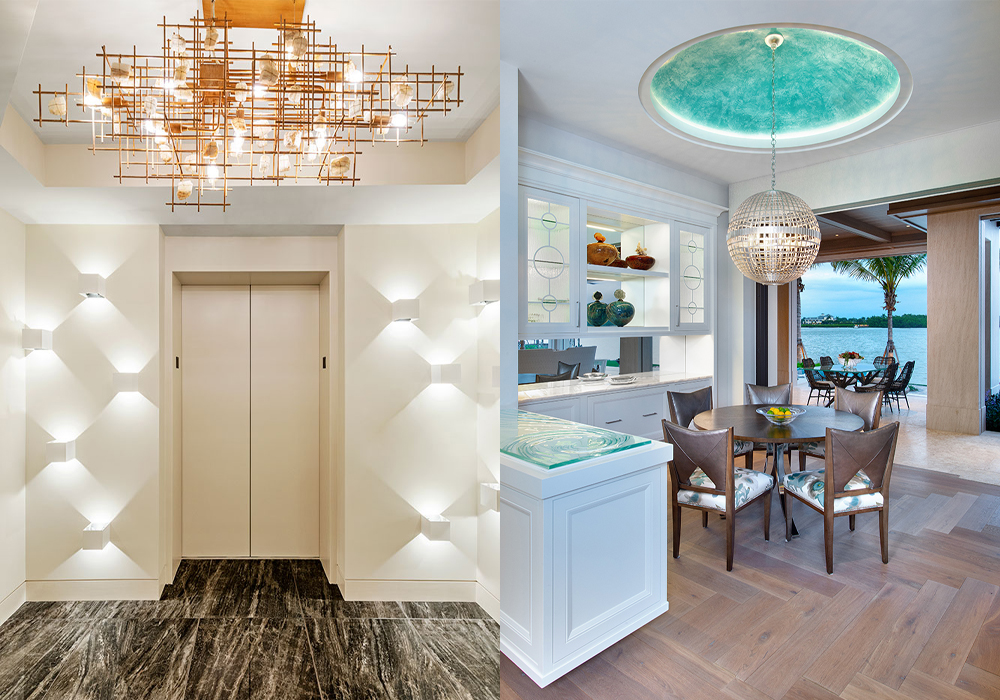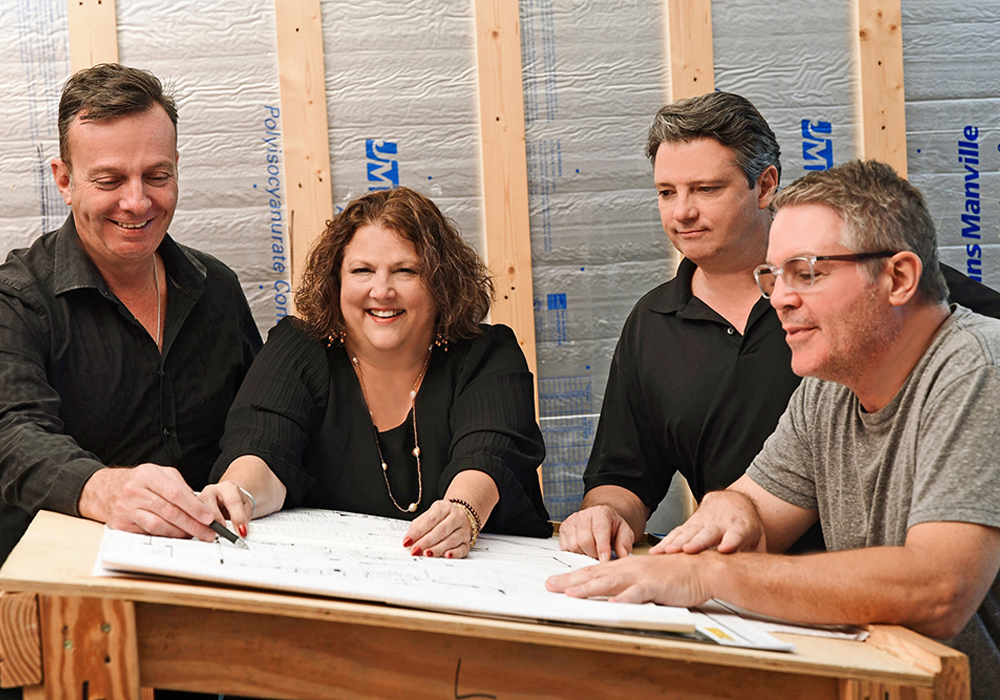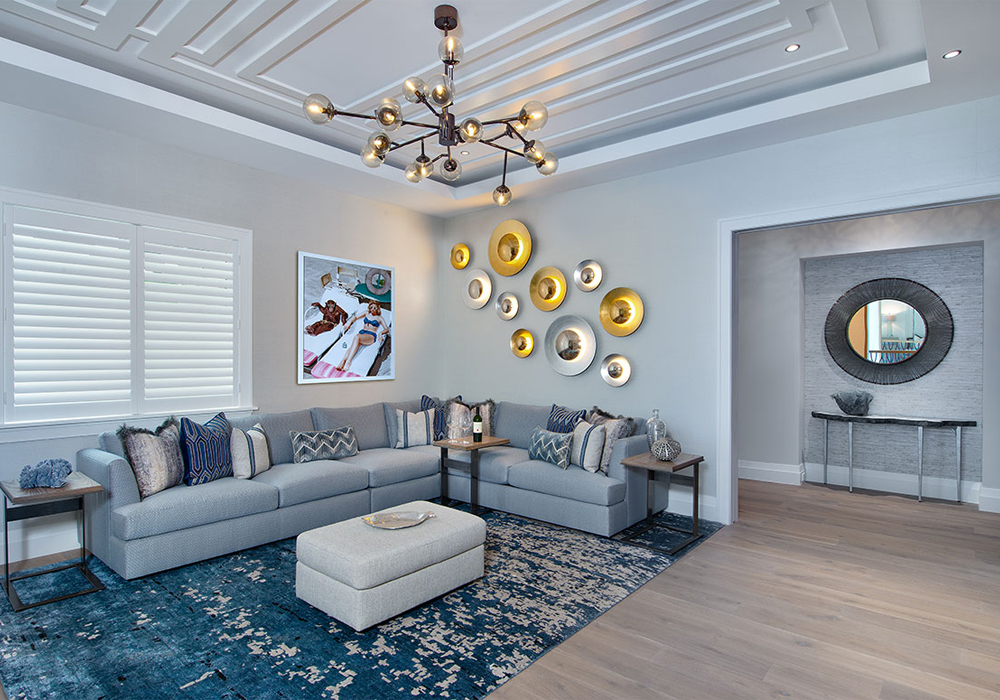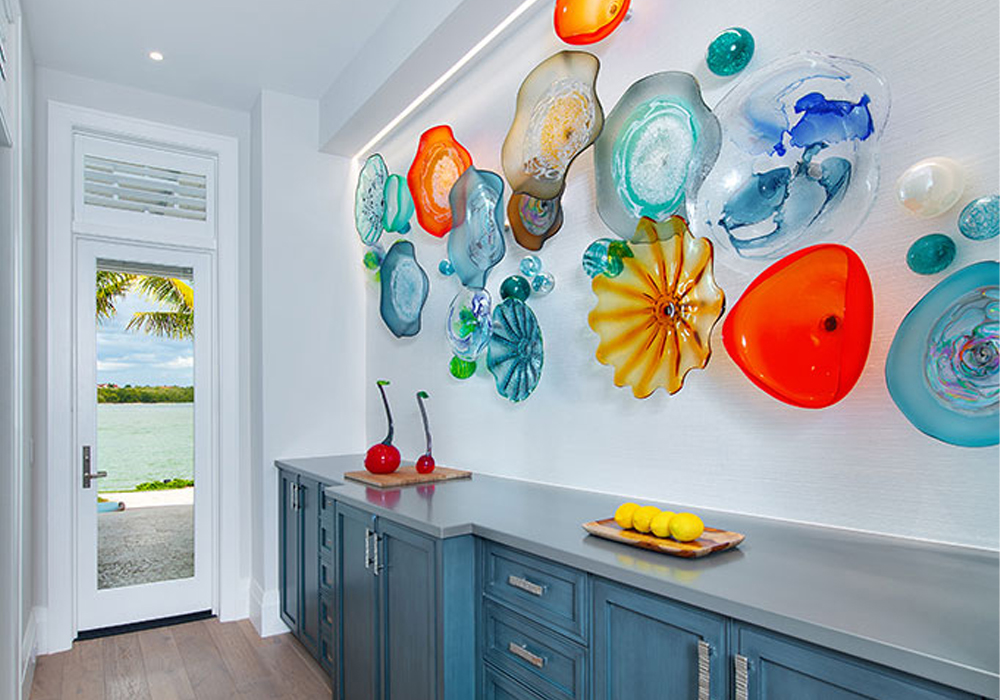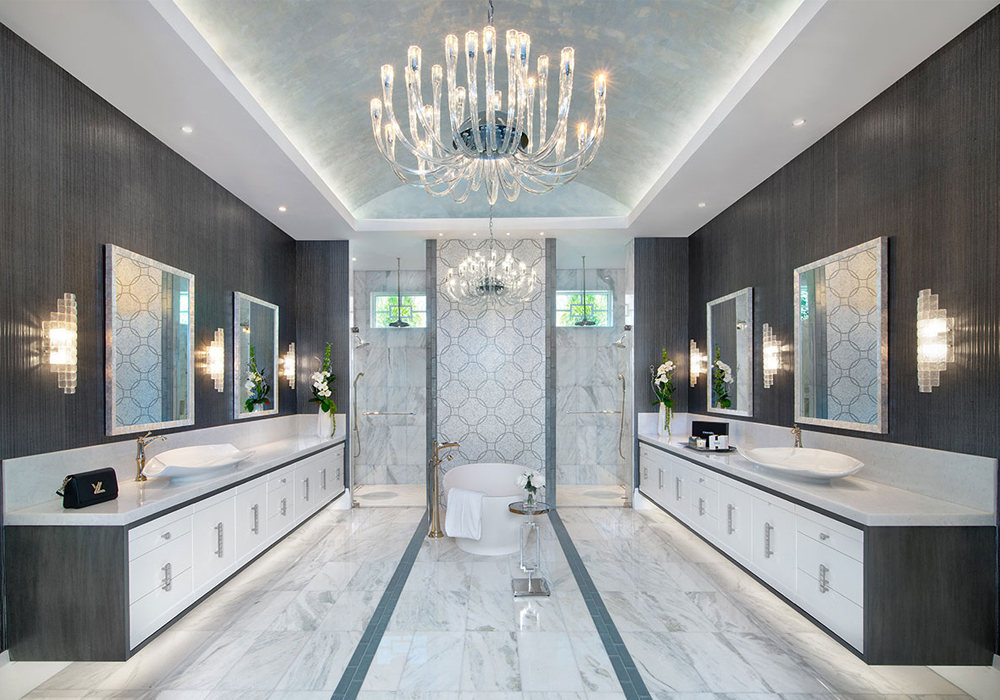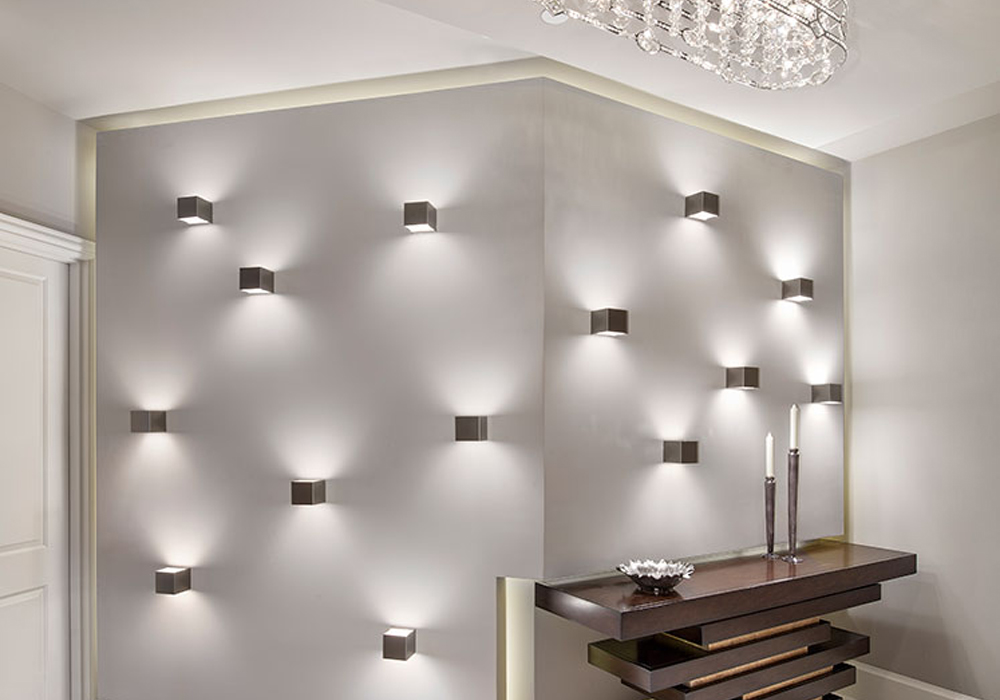Configure DMF’s DCC Cylinder System to meet the unique lighting challenges presented by open ceilings
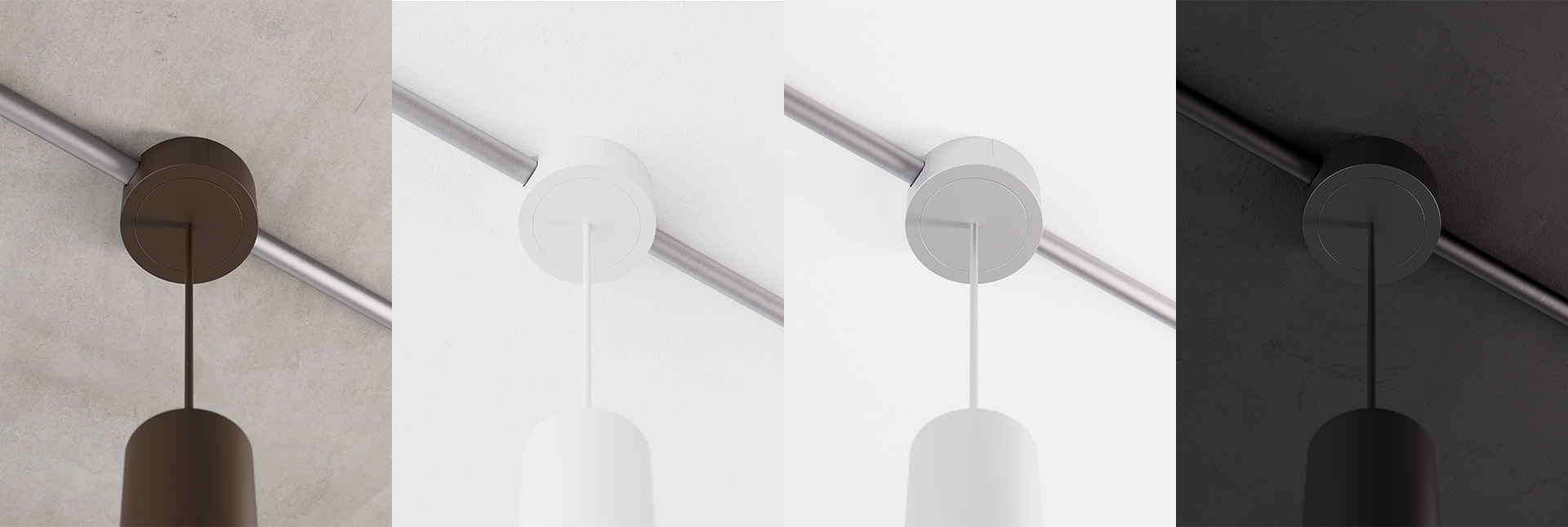
Prevalent across office layouts, open ceiling designs have no drop ceilings. Instead, traditionally covered ceiling structures, HVAC systems and electrical are exposed to offer a distinct industrial design. Plus, the removed ceiling increases the height of the room to make it feel more spacious.
However, the exposed structure also presents a unique set of design challenges. While the goal is to create a modern, unfinished aesthetic, visible wiring and junction boxes can make an open ceiling look inadvertently messy if executed poorly. In addition, higher ceilings can make lighting more difficult as light must travel a further distance to the work surface. That’s where the DCC Cylinder comes in.
Custom Length
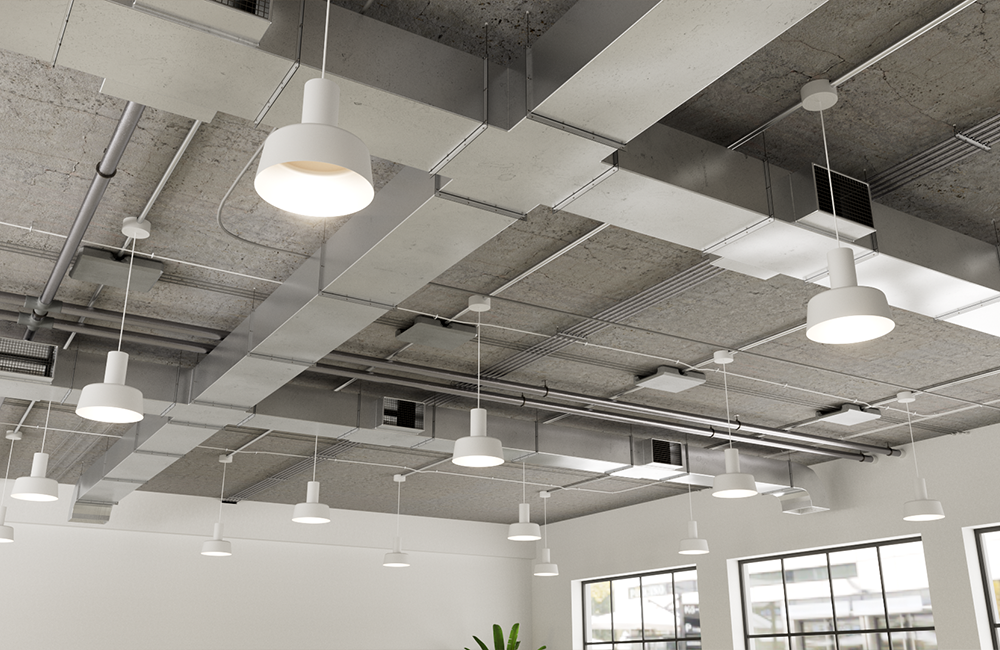
With dozens of options and over a million configurations, the DCC Cylinder is DMF’s most versatile product. One of the most popular options is customizing the length of the suspended pendants to match whatever your project needs. Available as a Stem or Cord Mount, the suspended cylinder length is among the longest in industry at up to 156″, illuminating even the tallest of spaces.
Junction Box Covers
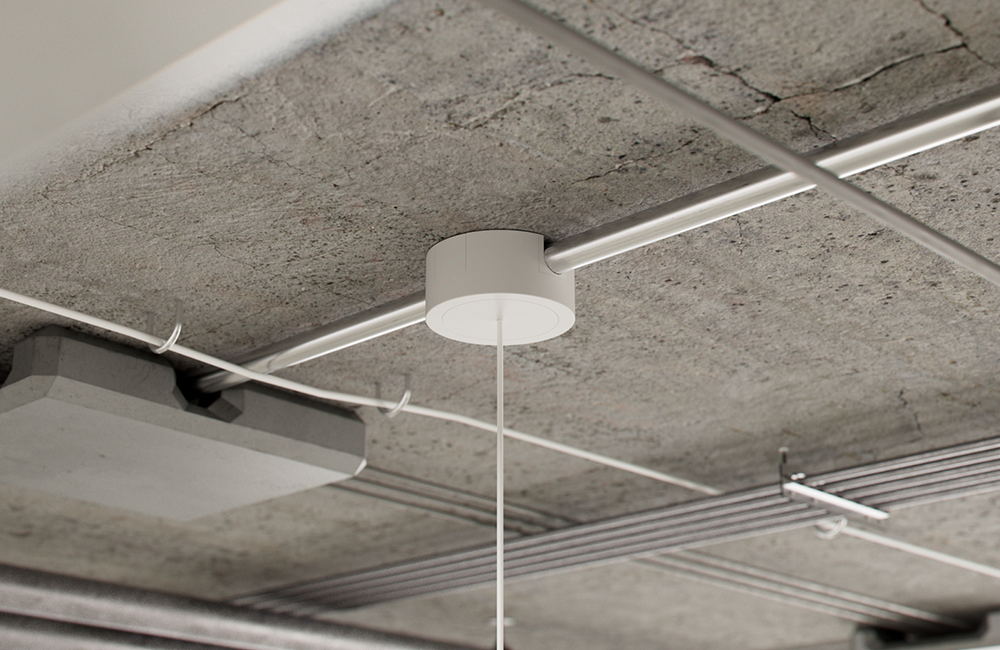
In an open ceiling layout, the network of conduit powering the suspended cylinders is completely visible. And depending on the lighting layout, each cylinder can feature anywhere between one and four conduit branches. While the solid metal conduit and elbow connections can add to the industrial design, the junction boxes usually do not. So instead of unsightly junction boxes ruining an open ceiling, designers can opt to utilize junction box covers.
Compatible with octagon and square boxes, each junction box cover features interchangeable open and closed knockouts that can be configured to match the desired lighting layout. Available in the same finishes as the Cylinder itself, the junction box covers complete the look for Cylinders in open ceilings.
Emergency Lighting
In addition to junction box covers, the DCC Cylinder’s entire suite of features remain available in open ceiling applications, even Emergency Lighting. Featuring two ceiling mounted remote drivers, the EM cylinder illuminates and dims identically in standard operation. When the emergency LED driver detects the loss of normal power, it switches control to battery power in emergency mode.
Learn more about these and other options for the DCC Cylinder System.
– – – – – – – –
Stay up to date with everything that’s happening at DMF: LinkedIn, Instagram, Facebook, or Twitter


